Shipwrecked on Ten Islands with Clintons & Branson – Part II
Please read Part I first.
What is Going On At Comoros Islands?
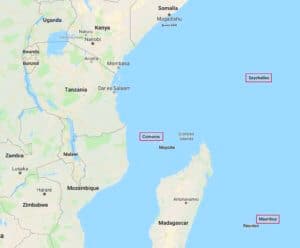
Comoros is one of the islands on their list that they wish to bring renewable energy to. It actually consists of three islands, with the largest island being the main focus. It is located just off the coast of Africa between Tanzania and Mozambique, with a population of 800,000. Comoros is a Tier 3 Island, meaning they have a severe problem with child and human trafficking, and the U.S. may be restricting aid to them.
In fact, in the U.S. 2018 ‘Trafficking in Persons Report’, the government of Comoros has literally done little to nothing to help exploited children or prevent trafficking. This is the assessment:
“The Government of Comoros does not fully meet the minimum standards for the elimination of trafficking and is not making significant efforts to do so; therefore Comoros remained on Tier 3. Despite the lack of significant efforts, the government took some steps to address trafficking by funding the salaries of new personnel at a listening center that provided assistance to victims and by adding a second emergency hotline to ensure crimes from all three islands could be reported. However, the government did not investigate, prosecute, or obtain convictions for any sex trafficking or forced labor crimes, including those committed by complicit officials.
Since 2014, it did not identify or refer any trafficking victims to protective services, and lacked formal procedures to do so. Authorities continued to lack an understanding of trafficking, and the government did not provide adequate resources or training to law enforcement officials, including the office charged with investigating child abuse and exploitation. The extensive use of mediation and financial settlements in lieu of investigation and prosecution of crimes resulted in the return of children to their alleged exploiters. The Anti-trafficking Task Force, which became operational in 2016, made no discernible efforts during the reporting period.”
That being said, there is something oddly strange when viewing this island via satellite. A pattern of trees planted to form what literally looks like a profile of a pigs head, along with some strange grid pattern of additional trees atop it. Located within it, there is another strange image of what would appear to be a very large disc-shaped reflective material with an opening in the center. It looks to be inset on a slight pitch into one of the crater-like mounds. Is it some sort of a solar device, missile launch site, or entrance to some peculiar underground area? Hard to say. If it is some sort of solar mechanism, the nearest home would appear to be quite a distance from it, located north, outside the main perimeter of trees, within its own square perimeter of trees. Going further north and just a hair west, up near the figure eight shaped crater-mound, there is another home with a purple roof. Both seem quite a distance from this reflective disc-shaped material.
The overall outline of the tree pattern spans roughly 2 miles, accounting for one heck of a lot of trees. The silver disc is approximately 130′ across based on google map’s measurements. There are very interesting crater-like mounds on the north end of it as well. This was once a volcanic island, so that may explain these inverted mounds?
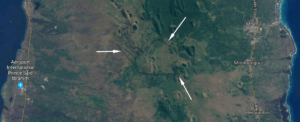
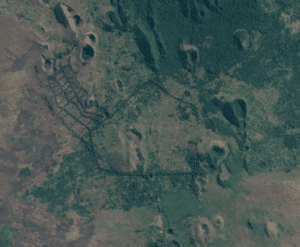
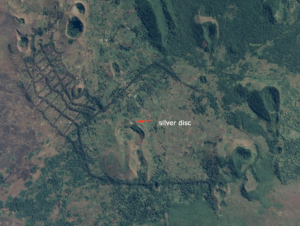
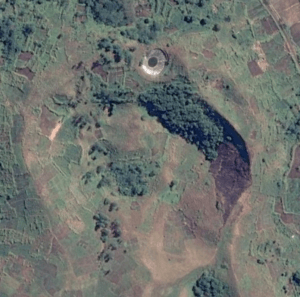
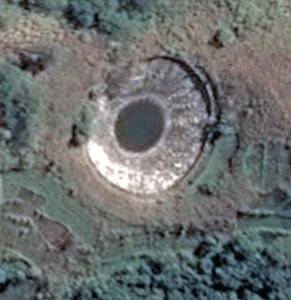
Despite all of this, members of the Clinton Foundation visited Comoros Island in February, 2018 to discuss sustainable development initiatives, moving full steam ahead.
Two months later, when April, 2018 rolled around, President Assoumani suspended the country’s constitutional court, calling it dysfunctional. He proposed a constitutional referendum would be held in July, and was gunning to end the system that rotated the single-term federal presidency among the three islands, as well as to allow a president to serve up to two terms. His hope was that if the referendum passed, he would be eligible in the 2019 elections for two new terms as president. There was a lot of resistance and he was accused of an attempted power grab.
In early July it was reported that vice president of Comoros was stripped of most of his duties due to denouncing President Assoumani’s plan. The referendum was held on July 30, 2018 and the proposed changed included elimination of a one-term presidency, would grant the president the power to dismiss the three vice presidents, as well as ending Comoro’s secular status, designating Islam as the state religion. Despite the incredible opposition boycott, there was a 60% turnout and the electoral commission claimed that almost 93% of the voters supported the referendum. Opposition leaders and others disagreed with the reported results. A story all too familiar. What is at stake for President Assoumani to stay the laws so he may remain President?
On August 13, 2018, President Trump nominated Michael Peter Pelletier of Maine to be Ambassador Extraordinary and Plenipotentiary of the United States of America to the Republic of Madagascar and the Union of the Comoros. Perhaps Mr. Pelletier will have a closer look as to what’s going on at the Comoros islands.
Who Are The Shipmates?
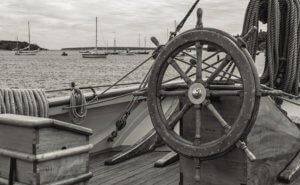
DNV GL: Technical Partner and Lead – industry standard, project development and procurement
Clinton Foundation: Technical Assistance and Procurement
Rocky Mountain Institute/Carbon War Room: Provides overview and recommendation of renewable solution, including technology risk/benefits, overview and recommendation of proposed project investment sites, and develop process steps and time for project schedule.
GRUPOTEC: Saint Lucia – An international firm founded in 2011 and based out of the United Kingdom, develops solar plants and undertook the engineering, procurement, and construction of the solar farm.
LUCELEC: Saint Lucia – Monopoly utility company in Saint Lucia who the government owns shares in, as well as EMERA being a top three shareholder, working with National project coordinator to facilitate development and implementation of renewable energy.
Solar Head of State: Based in Oakland, CA they began installations in 2010 and are entirely volunteer-driven and funded by donations since inception. A non-profit organization working with governments. They provide, free-of-charge solar photovoltaic systems on iconic buildings such as executive residences. Partner with the Clinton Foundation, Rocky Mountain Institute, IRENA, and several others. One of its advisors is Jigar Shah, Co-founder of Carbon War Room with Richard Branson. Another advisor is Danny Kennedy, former owner of Sungevity, who provides some of the free solar panels.
IRENA: International Renewable Energy Agency – promotes adoption and sustainable use of renewable energy.
CARILEC: Caribbean Electric Utility Services Corporation – trains member utilities on renewable energy resource development
EMERA (Caribbean) Inc.: Electric services company that provides power to many islands (not on the Saint Lucia project but is a top shareholder in LUCELEC).
Plus several other utility companies and stakeholder agencies/organizations.
Staying The Course:
Their argument for the need to transition the islands into renewable energy is due to the costly importing of fossil fuels to these islands. In their ‘Project Document’ via GEF and UNDP, they state “For instance, Saint Lucia imports almost 100% of its oil needed to run its sole power plant on the island. According to the Caribbean Electricity Service Corporation (CARILEC), electricity prices average at least US$0.34/kWh, in a context where the average annual household income is US$12,800 (2011). The dependence on imported fossil fuels is a familiar story throughout the region and the lack of diversified resources leaves the Caribbean islands greatly constrained in its economic opportunities. The objective of the Ten Island Challenge (TIC) is to accelerate the transition of Caribbean island economies from heavy dependence on fossil fuels to a diverse platform of renewables and energy efficiency, thereby establishing a blueprint for other isolated economies.”
They state that their “Off-Island Stakeholder Groups” will include: financiers and investors, multinational renewable energy and energy efficiency companies, commercial vendors, consultants, regional media, multilaterals, tourism industry corporate HQ (cruise companies, large hotel chains, etc.), energy NGOs, non-profits, foreign governments and other donors, replicators, Caribbean diaspora, small island nations’ governments, and tourists.
Wow, that is a lot of responsibility and involvement. Their goal is to have all islands achieve renewable energy penetration that amounts to 20-50% share of RE in the power generation mix by 2030.
It’s interesting to note that DNV GL is in the oil and gas business as well as renewable energy. CEO Remi Eriksen, believes that renewables and gas will become friendlies, working together in the future because gas can also provide baseload electricity to grids. He takes the position that gas is the way to go, moving away from coal and other fossil fuels, and states that by 2022, the Norwegian Continental Shelf could host a CO2 storage hub. He feels that the “North Sea can be the CO2 storage hub for Europe and source a new billion-dollar industry, with huge cost savings for combating climate change, representing a massive upside for gas in the future energy mix.”
This was their initial plan, though it has grown since:
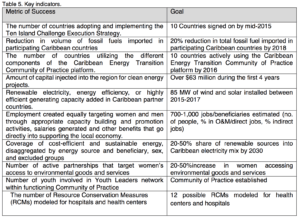
Ultimately, their end game is for “The Carbon War Room, through its Smart Island Economies program, will have the infrastructure in place to be able to expand the lessons learned from this experience well beyond the initial Ten Island Challenge participants.” All of this is being carried out in conjunction with the “Island Playbook” guidelines created by the Department of Energy.
Shipmate #1: Clinton Climate Initiative (Clinton Foundation)
 According to their website, “The Clinton Climate Initiative has partnered with governments of island nations to develop renewable energy projects that will reduce fossil fuel consumption and assist the transition to a low-carbon economy – with the goal of replicating and scaling this model to significantly reduce the impacts of climate change by creating resilient communities.
According to their website, “The Clinton Climate Initiative has partnered with governments of island nations to develop renewable energy projects that will reduce fossil fuel consumption and assist the transition to a low-carbon economy – with the goal of replicating and scaling this model to significantly reduce the impacts of climate change by creating resilient communities.
By partnering with governments, utilities, financing institutions, and the private sector, we help islands realize their own vision for a sustainable future.”
“CCI, launched by the Clinton Foundation in 2006, is working with small island developing states around the world to create, advance, and scale diesel replacement solutions. Rocky Mountain Institute-Carbon War Room, under the banner of the Ten Island Challenge, which was officially launched at Rio+20, is working with ten island nations to accelerate commercial opportunities to transition island economies off fossil fuels.”
An ironic and rather comical quote on their website states “We do not let the fact that we have different email addresses interfere with getting things done”, and is posted twice by mistake. Or was it? After all, duplicate copies of emails are always good. Maybe it was symbolic?
By 2015 they had already partnered with governments of 25 island nations across three continents, prepared over 20 renewable energy projects in nine island countries, and commended the Norwegian government for making it all possible via grants. They also thanked the Dutch Postcode Lottery and their donors for their generosity. In another release, they stated that the project was made possible by the United Nations Development Programme (UNDP), the Global Environment Facility (GEF), and the Norwegian Agency for Development Cooperation.
Just two months after Wikileaks launched a searchable archive of over 30,000 emails from Hillary Clinton’s private email server, the government of Norway posted a lengthy statement on their website as it pertains to their financial relationship with Clinton Climate Initiative, Clinton Health Access Initiative, and the Clinton Foundation. They state that they provided CHAI with NOK $533 million toward health projects between 2007-2015, and expected to provide an additional NOK $37 million. They contributed NOK $51 million, with anticipation of an additional $19 million toward CCI’s renewable energy to islands, and state that their contributions have created a tenfold increase in investments from the private sector. Cooperation agreements have been entered into with 21 small island developing states. They make it very clear that no funding was provided to the Clinton Foundation, CCI or CHAI before 2007.
It seems this ‘Ten Island Challenge’ has progressed quite a bit. According to Rocky Mountain Institute’s site, they list partnerships with 13 islands, Norway claims there are agreements with 21, and the Clintons stated in 2015 they had already partnered with 25 islands. The Clintons have a tendency to exaggerate, so it’s hard to say which number is accurate.
The Saint Lucia solar farm was a EC $20 million project, located north of Hewanorra International Airport. Now, the Clintons state that “it is the first utility-scale renewable energy project on the island and is funded, owned and operated by LUCELEC”, which is contrary to what all other websites, press releases, and the actual ‘Project Document’ that breaks down the funding reveals. In fact, nowhere does it state that funding came from LUCELEC. They are the monopoly utility company on the island which the government of Saint Lucia has 12.4% shares in.
It boasts nearly 15,000 solar panels which will generate approximately 7 million kWhs (or units) of electricity per year. Construction of the solar farm began in November 2017, and the solar farm began feeding the grid in April, 2018.
The Clinton Climate Initiative, an initiative of the Clinton Foundation, stated they provided technical assistance during the procurement process for the project.
Shipmate #2: Rocky Mountain Institute & Carbon War Room
 Carbon War Room, founded by Richard Branson in 2009, focuses on initiatives in operation including shipping efficiency, green capital, renewable jet fuels, and smart island economics, with emphasis in environmental areas such as energy supply, industry, buildings, transport and waste management.
Carbon War Room, founded by Richard Branson in 2009, focuses on initiatives in operation including shipping efficiency, green capital, renewable jet fuels, and smart island economics, with emphasis in environmental areas such as energy supply, industry, buildings, transport and waste management.
The launch director for Carbon War Room was Peter Boyd, who worked for CWR until late 2014, shortly around the time CWR merged with Rocky Mountain Institute. He had also served as CEO of Virgin Mobile South Africa. While working for CWR, he also served as chief of the U.K.’s Energy Efficiency Deployment Office, and was on the advisory board for the World Bank’s Sustainable Development Network.
Richard Branson is a busy boy, from owning Necker and Moskito Islands to Virgin Group, and an energy company called BMR Energy, which it was recently announced that he will be buying the STX Solar Farm on St. Croix, and quite possibly the damaged facility in Estate Donoe on St. Thomas. In 2016 they installed a 36-megawatt wind farm in Jamaica and a smaller facility in Guatemala. He also initiated The Elders back in 2007 with Nelson Mandela and a lot of familiar faces, in an effort to combat HIV/AIDS and climate control. Let’s not forget he was the founding sponsor of ICMEC back in 1999 as well. This is only the tip of the iceberg with “projects” Branson is involved with.
In December, 2014 Carbon War Room joined forces with Rocky Mountain Institute, which had been around since 1982. Founded by experimental physicist, Amory Lovins and his then-wife Hunter, they are dedicated to consulting, research, publication, and lecturing in the field of sustainability. Their main focus is on profitable innovations for energy and resource efficiency. They have nine initiatives: smart island economics, electricity platform, renewables solutions, shipping efficiency, sunshine for mines, sustainable aviation, trucking efficiency, mobility transformation, buildings, and reinventing fire: China. They have headquarters in Colorado, New York, Washing D.D., and Beijing, China.
Justin Locke, Director of Rocky Mountain Institute, also had connections to the World Bank. He served as disaster risk management specialist for the World Bank and managed one of the largest per capita investment portfolios in World Bank history. He accessed climate financing for Eastern Caribbean countries. Prior to that, he worked for UNDP as a development specialist at the UNDP Regional Center based in Fiji, providing technical assistance to 14 island countries, in addition to serving as the community/recover program manager for their multi-country office in Samoa. From 2002-2004, he was a Peace Corps volunteer in the Republic of Kiribati.
Shipmate #3: DNV GL
 DNV GL is very involved in the ‘Ten Island Challenge’. In fact, they have a page dedicated to this on their website, which states: “DNV GL acts as the key technical advisor for assisting the three non-profit organizations, local governments and utilities in this transition.” The three non-profits being the Clinton Foundation, Carbon War Room, and Rocky Mountain Institute.
DNV GL is very involved in the ‘Ten Island Challenge’. In fact, they have a page dedicated to this on their website, which states: “DNV GL acts as the key technical advisor for assisting the three non-profit organizations, local governments and utilities in this transition.” The three non-profits being the Clinton Foundation, Carbon War Room, and Rocky Mountain Institute.
DNV GL is an international accredited registrar and classification society headquartered in Hovik, Norway, with 350 offices operating in over 100 countries, with additional subsidiaries in the shipping and offshore classification society, making them the leader in the industry. They provide services to numerous industries including maritime, renewable energy, oil and gas, petrochemicals, aviation, automotive, electrification, healthcare, food & beverage, and software & information technology.
Prior to becoming DNV GL in 2013, it was previously ‘Det Norske Veritas’, and was established in 1864 in Norway to head technical inspection and evaluation of Norwegian merchant vessels. It has a long history in the shipping industry. Just a few years after their inception, in 1867 Germanischer Lloyd was founded in Hamburg by a group of 600 ship owners, ship builders and insurers.
On December 20, 2012, the two companies announced a merger which was approved by competition authorities in the USA, EU, South Korea, and China. The merger was officially signed on September 12, 2013 when Stiftelsen Det Norske Veritas (an independent foundation) owned 63.5% of DNV GL shares and Mayfair Vermogensverwaltung owned 36.5%. On December 14, 2017, Mayfair sold its shares to Stiftelsen Det Norske Veritas, making it the sole owner of DNV GL.
Stiftelsen Det Norske Veritas is a foundation with several levels of subsidiaries, all of which they now own 100%. Here is how it breaks down:
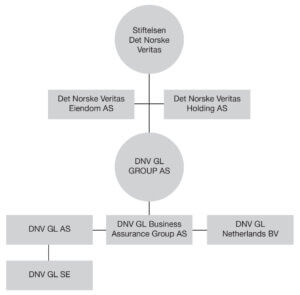
In a nutshell, Stiftelsen Det Norske Veritas is an independent foundation which has no owners or shareholders and operates with a governing body consisting of 10 Board of Directors and 45 Council Members, and was majority owner of Det Norske Veritas Holding AS. Det Norske Veritas Holding AS owns its subsidiary DNV Group AS. After the merger in 2013, when DNV Holding acquired the GL Group, Germanischer Lloyd SE, they changed their name to DNV GL Group AS. Once they finalized their deal with Mayfair in December, 2017, Stiftelsen Det Norske Veritas became 100% owner of Det Norske Veritas Holding AS. Confused? To summarize: Stiftelsen Det Norske Veritas is an independent foundation with no owners or shareholders, yet owns all of its subsidiaries listed above, five of which are Norwegian limited companies, one is registered as a European Society public company, and one is registered as a Dutch private company with limited liability.
Whereas a foundation in Norway may not have external or internal persons with ownership of the foundation’s assets, the foundation itself can be an owner of companies, and it may accept obligations and financial commitments and be subject to agreements and processes. Foundations are governed by the ‘Foundation Law’ of June 15, 2001, and the Foundation Authority.
They state in their 2016 Annual Report:
“Stiftelsen Det Norske Veritas is a free-standing, autonomous and independent foundation whose purpose is to safeguard life, property and the environment. This purpose is achieved through its ownership of companies – of which the most important is the DNV GL group, a classification, certification and technical assurance and advisory company.
In 2016, the Board continued to further develop and refine the company’s corporate governance model and role as a majority owner and holding company without direct involvement in business operations. This work is carried out continuously, in close cooperation with the other governing bodies of Stiftelsen Det Norske Veritas.”
What’s not indicated above, is the fact that the DNV GL Group has additional subsidiaries such as KEMA (shipping), GL Noble Denton (Oil & gas), and GL Garrad Hassan Canada Inc. GL Noble Denton was originally two separate companies dating back to 1867. The two companies scooped up a dozen maritime and oil & gas businesses over the years, and merged in 2009 prior to DNV GL merging in 2013, taking them all over. They also reflect in their 2016 Annual Report that in 2015 they acquired ISC ‘International Standards Certification Pty Ltd.’ in Australia and Japan with focus on the healthcare industry. And, they acquired ‘Noomas Sertifisering AS’, a leading Norwegian inspection and certification body within the fish farming and equipment industry. In 2014 they acquired 70% of shares in Marine Cybernetics AS (Norway) with the agreement of acquiring the remaining 30% of shares over a 3-year period.
DNV GL is organized in a group structure with five business areas of focus:
- Maritime: headquartered in Hamburg, Germany
- Oil & Gas: headquartered in Hovik, Norway
- Energy: headquartered in Arnhem, the Netherlands
- Business Assurance: headquartered in London, UK
- Software: headquartered in Hovik, Norway
The main shared service providers including HR, finance and IT support to all of the business groups, is headquartered in Hovik, Norway just outside of Oslo.
Det Norske Veritas Eiendom AS is their real estate arm which owns their headquarters in Hovik, just outside of Oslo, Norway, with their parent company Stiftelsen Det Norske Veritas and DNV GL operating out of the same location. In addition to the headquarters, Det Norske Vertitas Eiendom AS brought in real estate revenues of NOK $238 million, of which NOK $18 million was revenue from companies outside the Group.
This company is quite expansive. They have offices located all over the world, with multiple locations close to home in Norway. They span the outskirts of the U.S. from Boston, Massachusetts in the East to Miami, Florida in the south, straight over to Houston, Texas, with several locations up the coast of California, and upwards to Portland, Oregon, up north to Seattle, Washington near all of the islands.
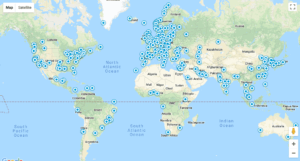
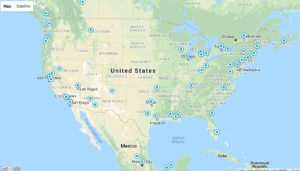
According to their 2017 Annual Report, their net profit for 2016 was NOK $876 million, in comparison to NOK $1,233 million in 2015. The significant difference is due to the arbitral award related to the financial settlement between Stiftelsen Det Norske Veritas and Mayfair Vermogensverwaltung SE merge in 2013. It seems they had a little bit of a hiccup related to a pre-merger issue with Mayfair Vermogensverwaltung SE, which resulted in a NOK $42 million settlement. Apparently there were some disputes regarding representations and warranties in the Business Combination Agreement and on how to govern DNV GL in accordance with Norwegian law and the Shareholders’ Agreement. Mayfair was also ordered to pay NOK $9 million in legal fees. Google indicates their overall revenue to be at NOK $19.5 billion for 2017.
What Exactly Does The DNV GL Group Do?

It is the world’s largest classification society, providing services for over 13,000 vessels and mobile offshore units, representing 21% of the global market share. They are also the largest technical consultancy and supervisory to the global renewable energy (wind, wave, tidal, and solar) and oil & gas industry. 65% of the world’s offshore pipelines are designed and installed to DNV GL’s technical standards.
As a classification society, DNV GL sets standards for ships and offshore structures, known as Class Rules. They comprise safety, reliability and environmental requirements that vessels and other offshore mobile structures in international waters must comply with. DNV GL is authorized by 130 maritime administrations to perform certification or verification on their behalf. They also created ‘Navigator Port’ software that assists ships with managing electronic paperwork from ship to shore and makes for a smoother port clearance. It boasts more than 1600 forms and port papers required by local and national authorities worldwide, and they are pre-filled with ship’s information and crew data. It covers more than 13,000 ports and terminals, and offers electronic reporting directly to authorities, including US eNOAD.
DNV GL also operates the world’s largest high power and voltage test laboratory, working as an independent, accredited certifier of electricity transmission and distribution components. They are the leader in certifying the renewable energy industry and handling site assessments, permitting and design consultancy. Their energy arm of advisors also handles renewable integration, plant operations, transmission and distribution grids, energy store, and measurements for cyber security.
Additionally, they handle business assurance, having issued certifications to more than 70,000 companies in multiple industry sectors, and is an accredited certifier in 80 countries. They provide accreditation and clinical excellence certifications to American hospitals as well. DNV GL is a provider of digital solutions for risk management and improving safety and asset performance for ships, pipelines, processing plants, offshore structures, electric grids and smart cities. Most recently, they have been accredited by the Alliance for Water Stewardship (AWS) to issue certificates proving compliance with the AWS international standard for freshwater management.
According to their 2016 annual report, the world shipping and mobile offshore units (MOU) was the third highest year ever for scrapping, yet despite this, the world fleet grew by 1% in vessels and 3% in gross tonnage. There were 940 ships contracted in the newbuilding market. DNV GL led all classification societies with 25% of global orders by GT, and the DNV GL-classed fleet stood at 12,404 vessels and MOUs.
DNV GL has also received numerous U.S. government contracts for inspection and certification processes. Between 2015 and 2018 some of those contracts amounted to a combined total of nearly $1 million.
In 2017, they were selected by the World Bank to be part of a consortium to support the development of three new standards in offshore wind turbine support structures, offshore substations, and offshore wind farm power cables in China. They will also be advising the Chinese government on project financing and risk management.
Being a Norwegian company, one can see why the Norwegian Government has a vested interest in the ‘Ten Island Challenge’, and contributed $8,372,000 to the Clinton Climate Initiative for their solar farm projects. DNV GL has 45 overseeing council members and all but seven are from Norway. In addition to this, Dr. Gro Harlem Bruntland was the “mother of sustainable development”. Dr. Gro Harlem is the former Prime Minister of Norway, former Director-General of the World Health Organization, and Deputy Chair of The Elders, a group that was initiated by Richard Branson in 2007 for the purposes of combating HIV/AIDS and climate change.
Who are The Elders? Another “humanitarian” adventure consisting of a group of members such as Gro Harlem Brundtland, Jimmy Carter, Desmond Tutu, Ban Ki-moon, and numerous others. In 2008, Nancy Becker Kennedy, from Los Angeles, CA, sent an email to John Podesta in the hopes that President-Elect Obama would consider her program she proposed pertaining to “creating millions of jobs through nationalizing in-home care for seniors and people with disabilities.” She went on to explain how she hoped Obama was planning to utilize the invaluable resource of the ‘Global Elders’ and included numerous links about all of the wonderful members.
Back in 2011, Jimmy Carter sent an email to former President Obama letting him know that ‘The Elders’ had accepted an invitation from North Korea to visit Pyongyang. They planned to make stops in China and South Korea as well. Their purpose was to learn as much as possible about humanitarian problems, the political and military situation, and to encourage peace and denuclearization of the Peninsula. Mary Robinson, Gro Harlem Brundtland, and Marti Ahtissari would be joining him as well. Unfortunately, it wouldn’t seem much was accomplished on the denuclearization.
Interesting side note: Dr. Gro Harlem Brundtland was the Director-General of the World Health Organization from 1998-2003. In 2002, Dr. Jim Yong Kim, the current President of the World Bank, nominated by former President Barack Obama in 2012, was working with the World Health Organization on a Tuberculosis treatment, and became the advisor to the Director-General in 2003. Flash forward to May 24, 2018, the World Health Organization and the World Bank Group joined forces to strengthen global health security. World Bank Group President Dr. Jim Yong Kim co-led the creation of the ‘Global Preparedness Monitoring Board’ which is co-chaired by none other than Dr. Gro Harlem Brundtland. The focus appears to be on outbreaks, pandemics, and other emergencies with health consequences.
In regards to Saint Lucia and multiple islands in the region, DNV GL is the technical partner and lead, with CCI/CWR-RMI focusing on energy audits, feasibility studies, grid integration studies, Integrated Resource Plans (IRPs), and are developing Requests for Proposals (RFPs) for procuring IPPs and contractors.
According to DNV GL, they have already been working on projects on other islands such as the British Virgin Islands, Aruba, Bahamas, San Andrés and Providencia, and a utility scale solar project on Caye Caulker, Belize, which is partially owned by Harry Dole.
Shipmate #4: LUCELEC
 Up until the beginning of 2016, LUCELEC was the only fully integrated electricity company in Saint Lucia with the exclusive right to transmit and distribute electricity. However, on December 16, 2015, Governor-General Pearlette Louisy enacted the National Utilities Regulatory Commission Act, and the National Utilities Regulatory Commission (NURC) was formed to grant licenses to independent power producers (IPPs) to generate electricity from renewable sources. This put a bit of a strain on LUCELEC since they had always maintained the monopoly position. The new ACT would allow for competition in the renewable energy area, but LUCELEC was confident they would maintain their position in transmission and distribution. Due to the mandate to achieve 35% of electricity production from renewable energy by 2020, LUCELEC was guided by the National Energy Transition Strategy (NETS) to pursue several renewable energy projects. Interestingly, NETS was developed jointly by the Government of Saint Lucia with LUCELEC, in consultation with the Rocky Mountain Institute.
Up until the beginning of 2016, LUCELEC was the only fully integrated electricity company in Saint Lucia with the exclusive right to transmit and distribute electricity. However, on December 16, 2015, Governor-General Pearlette Louisy enacted the National Utilities Regulatory Commission Act, and the National Utilities Regulatory Commission (NURC) was formed to grant licenses to independent power producers (IPPs) to generate electricity from renewable sources. This put a bit of a strain on LUCELEC since they had always maintained the monopoly position. The new ACT would allow for competition in the renewable energy area, but LUCELEC was confident they would maintain their position in transmission and distribution. Due to the mandate to achieve 35% of electricity production from renewable energy by 2020, LUCELEC was guided by the National Energy Transition Strategy (NETS) to pursue several renewable energy projects. Interestingly, NETS was developed jointly by the Government of Saint Lucia with LUCELEC, in consultation with the Rocky Mountain Institute.
Just for the record, Governor-General Pearlette Louisy is no stranger to Bill Clinton. She was Governor-General from 1997-2017. The Saint Lucia government website still hosts letters of gratitude toward Bill Clinton, such as this one from 1999 where “Dame Pearlette Louisy highlighted the historic visit of President Bill Clinton to the Eastern Caribbean two years ago:
“What was most memorable was the tremendous upsurge of hope and enthusiasm and generous goodwill that this visit generated as well as the new spirit of partnership that the Bridgetown Accord evoked between the Caribbean and its nearest neighbor, the United States. Dame Pearlette Louisy emphasized that there is need to recapture this spontaneous fervour and vitality which inspired the deliberations and decisions of this historic meeting, so that the efforts at preserving peace and democracy and at advancing the economic and social progress to which the Caribbean and the United States them committed themselves can be sustained.”
On January 18, 2003, after his presidency, Bill Clinton attended the Ballroom of the Sandals Grande Hotel for a dinner in honour of him. Many officials were there in support, such as Governor General Pearlette Louisy of Saint Lucia, Governor General of St. Vincent & the Grenadines, Colleague Prime Ministers of the OECS, Members of the St. Lucia Cabinet of Ministers, Chief Justice of the Eastern Caribbean, Members of the Parliament, Their Excellencies the Members of the Diplomatic Corps, and other distinguished guests. Here is a snippet of what they had to say:
“More than ten years ago, the people of the Caribbean watched and followed the trajectory of the presidency of William Jefferson Clinton. Over that period of American prosperity, President Bill Clinton earned the admiration of most and captured the imagination of many. Tonight, we are honored with his presence among us. Tonight, we who have mostly seen greatness unfold from the proximity of our television screens, have the distinct pleasure and the honor of breaking bread with greatness – in person.
In the best tradition of Caribbean culture, a politician knows when he or she has made it or has lost it, when one becomes the subject of a Calypso. In the past week, one of our radio stations has been playing, over and over, a Calypso defending your record of achievement and accomplishment. The calypso was composed by the Mighty Sparrow — a Trinidadian singer, born in Grenada, a product of our Caribbean, acknowledged and honoured as the world’s greatest calypsonian. It’s most popular refrain is “Don’t Touch Me President”. Now, when a Caribbean Calypsonian whose favorite pastime is “dissing” politicians, tells the world Don’t Touch His President, then Sir, you know for sure that you have entered the annals of the untouchable, the invincible and the unassailable.
The ties that bind the United States and the Caribbean are not simply the links of history, but the association of family, migration, opportunity, and geography. It would be no exaggeration to say that not since John F. Kennedy has a United States President captured the minds and hearts of Caribbean people, as did President Bill Clinton during his tenure at the White House.”
It is remarkable how those words may otherwise be interpreted.
Shipmate #5: GRUPOTEC
 The company was founded in 1997 and is based in Valencia, Spain. It also has a presence in the United States (California, Miami, and Puerto Rico), Morocco, the United Kingdom, Italy, France, Ecuador, Mexico, Brazil, Algeria, and India.
The company was founded in 1997 and is based in Valencia, Spain. It also has a presence in the United States (California, Miami, and Puerto Rico), Morocco, the United Kingdom, Italy, France, Ecuador, Mexico, Brazil, Algeria, and India.
Valencia International reported on Grupotec, stated that Grupotec is dedicated to engineering and architectural services and has been undergoing a spectacular growth period. However, the article is not dated. They state, “The company’s 2014 revenues have reached 134.389.659 euros thanks largely to contracts obtained in the UK in the areas of renewable energies and sustainable development. Overseas income in fact represents more than 90% of the income of this company founded in 1997.”
Oddly, Grupotec doesn’t even mention their project in Saint Lucia on their website. In fact, they haven’t added new projects to their website since 2013, and the news media coverage on their website only contains stories between 2010 and 2015. For a company that has expanded greatly, one would think they would promote such projects.
According to the videos (top of article) on the big solar farm project and the Governors House in Saint Lucia, Grupotec was the main builder/installer on this job, yet they have very little internet coverage.
Other Shipmates Working on The Ten Island Challenge on Other Islands
Note: This is the short list. More research is required to cover all partners on all islands.
Shipmate #6: Emera (Caribbean) Inc.
 Emera (Caribbean) Inc. (EC), is a wholly owned subsidiary of Emera Inc., a publicly traded energy utility company. Emera Incorporated has headquarters in Halifax, Nova Scotia and Canada, and as of 2017 it had revenues of $6.2 billion with assets of $29 billion. It originated from the provincial Crown corporation Nova Scotia Power Incorporated in 1998 and the name was changed in 2000 to Emera. In 2013, Emera acquired Bridgeport Energy, Rumford Power, and Tiverton Power plants from Capital Power Corporation for $541 million. In 2016, Emera acquired TECO Energy, based out of Tampa, Florida, which included Tampa Electric, Peoples Gas (not the one in Chicago), and New Mexico Gas, for $10.4 billion.
Emera (Caribbean) Inc. (EC), is a wholly owned subsidiary of Emera Inc., a publicly traded energy utility company. Emera Incorporated has headquarters in Halifax, Nova Scotia and Canada, and as of 2017 it had revenues of $6.2 billion with assets of $29 billion. It originated from the provincial Crown corporation Nova Scotia Power Incorporated in 1998 and the name was changed in 2000 to Emera. In 2013, Emera acquired Bridgeport Energy, Rumford Power, and Tiverton Power plants from Capital Power Corporation for $541 million. In 2016, Emera acquired TECO Energy, based out of Tampa, Florida, which included Tampa Electric, Peoples Gas (not the one in Chicago), and New Mexico Gas, for $10.4 billion.
In addition to the above utility companies, Emera also owns Nova Scotia Power, Emera Maine, Barbados Light and Power Company, Grand Bahama Power Company, Dominica Electricity Services, and Light and Power Holdings – LUCELEC. It also owns power plants and trades and markets natural gas and electricity as well as two natural gas companies.
Now follow this: Emera Inc. owns 80% of Light & Power Holdings. Emera Caribbean Limited, who is wholly owned by Emera Inc., sold its 19.1% interest in LUCELEC to Light & Power Holdings Ltd, also owned by Emera Inc., in 2011 for $25.8 million. This brought Light and Power Holdings to an equal top two shareholder in LUCELEC.
In 1994 LUCELEC went public. According to their 2016 credit rating report, as well as information on their website, the current makeup of shareholders include: EMERA (Caribbean) Inc. (20%), First Citizens Bank Ltd. (20%), National Insurance Corporation of Saint Lucia (16.8%), Castries Constituencies Council (16.4%), Government of Saint Lucia (12.4%), and individual shareholders (14.4%). LUCELEC’s shares are traded on the Eastern Caribbean Securities Exchange.
Aside from Emera (Caribbean) Inc. being an investor in LUCELEC in Saint Lucia, they are also reaping the benefits from their Barbados Light & Power company in Barbados, Grand Bahama Power Supply, Emera Caribbean Renewables Ltd., and are a majority shareholder in Dominica Electricity Services Ltd.
Emera was working in St. Vincent on a geothermal project that was expected to commence in 2016. In their 2015 report they state “legal, policy and technical support continues to be provided by the Clinton Climate Initiative and Rocky Mountain Institute.”
In regards to their overall clean energy strategy, they are seeing a “driving change in the global energy arena” that include insights from the U.N. Framework Convention on Climate Change from 2015 that was held in Paris and “charts a new course in the global climate effort.” From their climate change agenda, they are seeing results with new energy policies made by Caribbean governments. They also state “Further impetus is coming from initiatives such as the Breakthrough Energy Coalition announced by Bill Gates and others that are expected to accelerate technology developments in the renewable energy sector and reduce the cost of alternatives.” As noted above in the timeline, this coalition’s goal is to raise billions from governments for renewable energy to various locations. The group consisting of the likes of Jeff Bezos, George Soros, Mark Zuckerberg, and numerous others contributed an initial investment of $2 billion of their own funds.
Shipmate #7: SIDS Lighthouse Initiative (IRENA)
 IRENA was founded in 2009 by Hermann Scheer and is headquartered in Abu Dhabi, United Arab Emirates. It is an intergovernmental organization to promote adoption and sustainable use of renewable energy. It consists of 153 states and the European Union, and is an official United Nations observer. Herman Scheer was a socialist democrat member of the German Bundestag (parliament), president of Eurosolar and general chairman of the World Council for Renewable Energy. According to Wikipedia, in 2010, “he suddenly died in a hospital in Berlin from heart failure after an unspecified short and severe illness.” Adnan Amin, Kenyan representative, was sworn in on April 4, 2011 as the first Director-General.
IRENA was founded in 2009 by Hermann Scheer and is headquartered in Abu Dhabi, United Arab Emirates. It is an intergovernmental organization to promote adoption and sustainable use of renewable energy. It consists of 153 states and the European Union, and is an official United Nations observer. Herman Scheer was a socialist democrat member of the German Bundestag (parliament), president of Eurosolar and general chairman of the World Council for Renewable Energy. According to Wikipedia, in 2010, “he suddenly died in a hospital in Berlin from heart failure after an unspecified short and severe illness.” Adnan Amin, Kenyan representative, was sworn in on April 4, 2011 as the first Director-General.
In 2015, IRENA developed the SIDS Lighthouses Initiative to support the strategic development and implementation of renewable energy in SIDS (small island developing states), and to assist policy makers with the required steps to enable targeted action. They provide coordinated support for islands to convert fossil-based power systems to renewable energy. They work together with private and public partnerships, intergovernmental and non-governmental stakeholder organizations, and offer technical expertise in planning, identifying, structuring and executing projects, in addition to assisting with financing stages. They state on their website that they have mobilized US $500 million.
The Climate Initiatives Platform website indicates the complete breakdown of information on the SIDS Lighthouses Initiative since its inception in 2015. According to this document, they claim to have an investment volume of $1 billion, representing 19 registered projects since the launch of the Caribbean portal at COP21.
Under participants, they list 19 members:
European Union, France, Germany, Italy, Japan, New Zealand, Norway, United Arab Emirates, United States of America, Indian Ocean Commission, IRENA, Association of the Overseas Countries and Territories of the European Union, UNDP, World Bank, ENEL, Clean Energy Solutions Center, Clinton Climate Initiative, Rocky Mountain Institute – Carbon War Room, SE4ALL.
They indicate they partner with:
Antigua and Barbuda, Mauritius, Bahamas, Nauru, Barbados, Palau, Cabo Verde, Samoa, Comoros, São Tomé and Príncipe, Cook Islands, St. Vincent and the Grenadines, Fiji, Seychelles, Grenada, Solomon Islands, Guyana, Tonga, Kiribati, Trinidad and Tobago, Maldives, Tuvalu, Marshall Islands, Vanuatu, Federated States of Micronesia, ENEL, New Zealand, European Union, Norway, France, SE4ALL, Germany, United Arab Emirates, Indian Ocean Commission, United States of America, IRENA, UNDP, Japan, World Bank Group
According to the Clinton Foundation’s press release on September 1, 2015, they state that the Clinton Climate Initiative (CCI) is teaming up with Rocky Mountain Institute-Carbon War Room (RMI-CWR), and the International Renewable Energy Agency’s (IRENA) Lighthouses Initiative to help island nations accelerate the deployment of renewable energy and transition away from fossil fuels. They refer to the small island developing states as (SIDS) for short. Not to be confused with SIDS (sudden infant death syndrome) most people are familiar with.
Shipmate #8: CARILEC
 The Caribbean Electric Utility Services Corporation (CARILEC) was founded in 1989 by USAID part of an electric utilities modernization project implemented by NRECA (National Rural Electric Cooperative) under a five-year co-operative agreement. It began with 9 members, and currently has 35 members, 67 associate members, and 5 affiliate members.
The Caribbean Electric Utility Services Corporation (CARILEC) was founded in 1989 by USAID part of an electric utilities modernization project implemented by NRECA (National Rural Electric Cooperative) under a five-year co-operative agreement. It began with 9 members, and currently has 35 members, 67 associate members, and 5 affiliate members.
They have partnerships with Rocky Mountain Institute-Carbon War Room, Clinton Climate Initiative, IRENA, and CARICOM (Caribbean Community) of 15 Caribbean nations and dependencies, all of which are presented front and center at the top of their website.
CARILEC is an association of electric utilities, suppliers, manufacturers and other stakeholders working in the electricity industry in the Caribbean. Their goal is to become a major player in forging member states to develop an energy package.
In 2016, CARILEC signed a MOU (memorandum of understanding) with Rocky Mountain Institute-Carbon War Room which entailed a framework for cooperation and coordination in the renewable energy sector and information sharing between utilities in the region.
Click here to continue to Part III
Find out:
Who’s at The Helm?
The Endless Treasure Trove
No Person is An Island
Download this full 4-part report in PDF format from the Bookshop. >






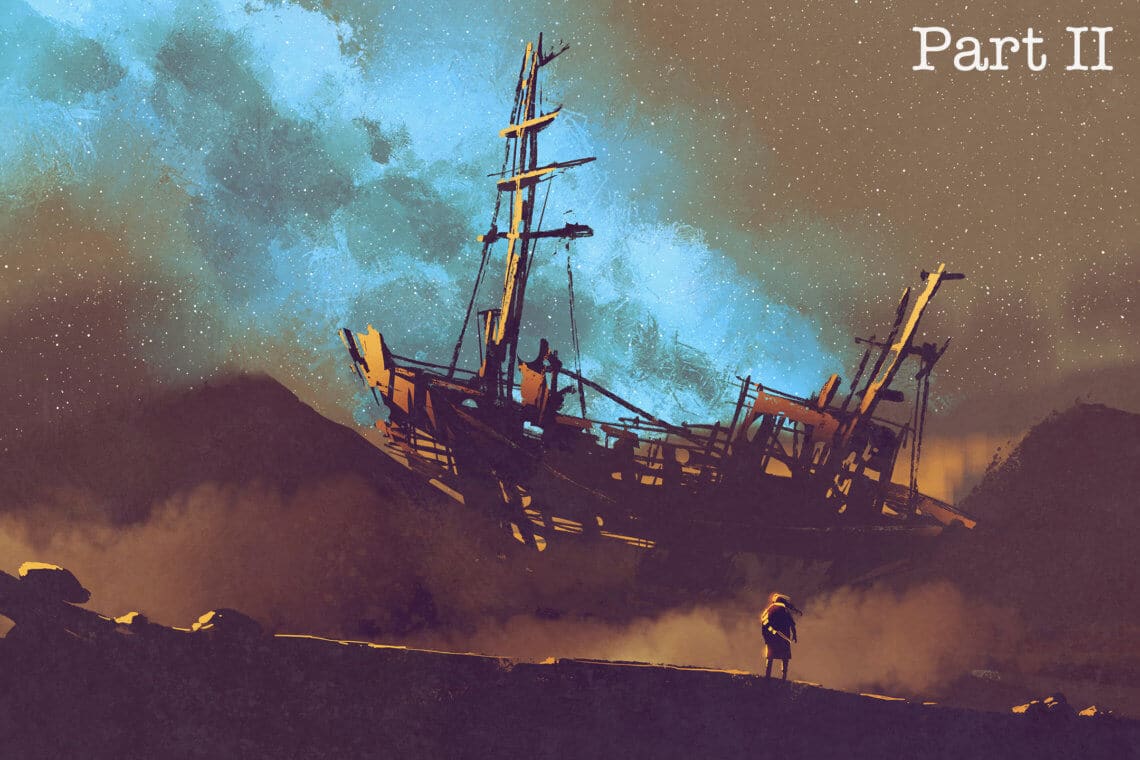





7 Comments
martha p thacker
Emera is a Canadian company which bought out one of two large Maine electric suppliers. Hiked rates and give sorry service.
The gas….perhaps a use for the Keystone pipeline? It is of no use to Americans..TransCanada is the builder. So it is also Canadian.Because of Trump’s new tariffs, Europe is scheduled to buy gas that goes through this pipeline instead of Russia…Odd, the pipeline, the production of shale oil out of Canada and some in America is disaster for the environment.
But South America and Europe would be quite the market.
C
I’m not quite finished reading your article, but will do so tomorrow. But before I forget, you may want to look at the following links. There are some weird pics of things that look like missile silos or cisterns maybe (people can’t seem to figure out what they are) on an island off the coast of Washington state that was involved in some of the recent plane shenanigans out there: https://threadreaderapp.com/thread/1028453423505727489.html . You might also want to check out this reddit thread which talks about some of this as well: https://old.reddit.com/r/The_GreatAwakening/comments/96p7rp/wow_a_crazy_string_of_coincidences_on_the_q400/ . Thank you for your hard work on this article. Nice to see journalism alive and well. After years of MSM consumption, I thought it was permanently a lost art. Good job!
Corey Lynn
Thank you. I will check all of this out.
Poppy Frew
I see the links are banned and not found, must be some truth in there.
Teresa
I can’t help but wonder if all these so called renewable energy “projects” are tied into the scams being passed off to the masses as the UN Agenda 2030 stated mission goals.
Malcolm
SIDS! Small island developing states… or sudden infant death syndrome? Double meanings aren’t impossible
June Blue
Hmnn interesting find. I do find that interesting because there is another square pool like area near that eye.
It measures 5464 sq ft. It seems to have a square platform near it too. Just like the fake tennis courts? It is 0.23m away from the eye.